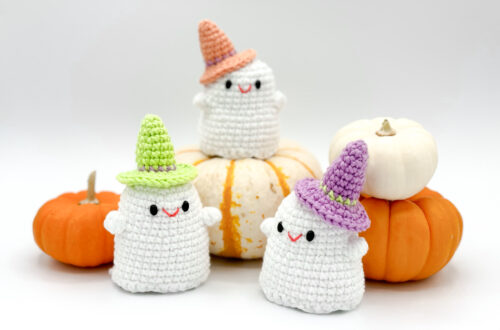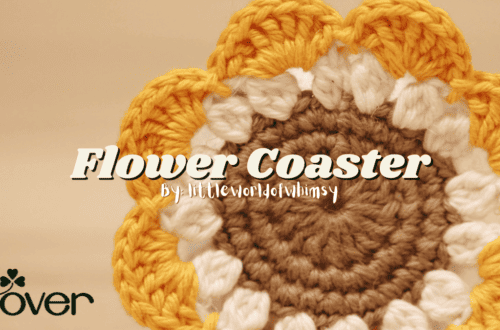Ombré Bracelet with Beading Loom
Beading on a loom is a wonderful way to unwind and create something beautiful.
I was introduced to beading back in 2013 and I completely fell in love with it. Not only can you make unique pieces, but the process is quite soothing. It wasn’t until last year that I began to learn about the Beading Loom and now my mind has been blown.
Looms provide quicker results, which is great for people who like to move from one project to another. Today I will be teaching you how to make a simple beaded bracelet with Clover’s Beading Loom. I created this pattern to be beginner-friendly so that it’s not too difficult. I also incorporated some bead color changes to help you become comfortable with more intricate patterns in the future.
Here’s what you’ll need to create the Ombré Bracelet:
- The Ombre Pattern
- Clover’s Beading Loom – Art No. 9910
- Clover’s Beading Thread (Grey) – Art No. 9916
- Clover’s Spring Tape Measure – Art No. 9610
- Clover’s Bordeaux Ultimate Scissors 130 – Art No. 4940
- Beading Mat
- Miyuki Delica Beads 11/0 in Matte White DB-351, Matte Opaque Light Mauve DB-356, and Opaque Dusty Mauve Satin DB-379
- Jewelry Pliers
- Bracelet Clasp
- E6000

How to use your loom: Ok, so if you’re new to the Beading Loom world, welcome to the party! You will enjoy working with this tool as you learn how to use it. I want to go over a few things before we begin beading. First, take out your instruction sheet and get familiar with the parts and instructions. It may look overwhelming at first, but I promise it’s not as difficult as you may think. I used a highlighter to go through and underline the important sections.

Choosing beads: The Beading Loom works with 11/0 cylinder and round beads. The directions state that “Other bead sizes can be used by changing the intervals between the warp threads and tightening the weft threads”. That statement means that if you want to use a larger bead, it’s totally possible! All you need to do is adjust the warp threads to add more space for your bead to fit. So skipping a groove could help a triangle or peanut bead fit perfectly.

Beading Sides: If you’re using cylinder beads for your projects, turn your warp guide to the (A) Grooves. As for round beads (donut-shaped), you’ll need to adjust your warp guide to the (B) Grooves with the horizontal lines pointing upward.


Quick note: It’s easy to forget the parts of the loom while you’re reading the directions, so I used a fine-tip sharpie to write the part names on my loom. It will eventually erase off, but it’s a quick fix to help you identify the parts especially the A side and B side. (see pic)

Understanding Warp & Weft Threads: If you’re already familiar with weaving, then you may already understand the difference between the two. In short, warp threads are placed on a loom for the length of your project and the weft threads are attached to the needle. When you think of the word weft, remember that it means to weave. The weft threads allow you to secure your beads onto your bracelet.
Alright, now that we have the basics down let’s download the pattern (click here) and start!
Instructions
Step 1: Grab your supplies
Download and print the beading pattern. If you don’t have a printer, you can download it to your phone and keep it nearby to follow along.
Grab your beading mat and separate your Miyuki beads. If you don’t have these specific beads on hand, feel free to use beads that you already have.

The pattern should measure out to 3.15 inches in length, so you will need to adjust the rail up to the third notch from the original point. The loom working space will be about 6 inches. This pattern yields a smaller bracelet to help you grasp working on the loom. You can repeat this pattern or add more beads if you have more loom experience.


2. Setting up the Loom (Adding the Warp Threads)
Adjust the warp guide to the A Grooves and tighten. Miyuki Delica 11/0 beads are cylinder, so that’s why we will bead on the A side.

Insert the peg into the middle hole and make sure it’s secure.

Take your Beading Thread and start with a slip knot then place it onto the peg.


Clamp the warp holder to the warp guide beam to secure the slip knot in place.

Wind 11 warp threads in the center of your loom from each side.

Warp Tip: I started my warp adding my warp threads at the 4th notch and ended at the end before the 6th notch.
Tension Tip: Remember to wrap the thread once or twice around the peg each time to help with tension.

Important Note: Our pattern is only 10 rows, but always add 1 additional warp thread for the weaving process. Since we’re using an odd number of warps, you will have warp holders on each side. When your warp threads are even, the warp holders will be on the same side.
Cut the warp thread with Clover’s Bordeaux 130 Scissors, then wind the thread around the peg a few more times before attaching the warp holder to the warp guide beam.

If you need to adjust to tension, toggle with the warp guide beams.

Once you’re comfortable with your tension, insert the metal stoppers to prevent jumping warp threads.

Step 3: Adding the Weft Thread (Threading the weaving needle)
Cut a long piece of Clover’s Beading Thread and thread the weft needle.

Take the end of the thread and make a knot on the left side of the warp thread.
Use your Spring Tape Measure to make sure that you have a 6-inch tail.

I like to place the tail by the warp holder, so it’s not in the way when I began beading.

Step 4: The Beading Process
Now we are ready for the fun part. It’s time to start beading! Grab your pattern and keep it close to you. The pattern includes a written portion if you find it hard to follow along with only the picture. Be sure to cross out each part that you finish on the pattern to prevent any confusion. This is a helpful step to remember if you decide to move on to patterns that call for more bead changes.

Start by putting your weft (needle) thread underneath the warp threads then, pick up 10 Mauve Satin DB-379 beads.


Push the beads down the thread and begin to line them up in between each warp.


Add your needle in backward. Make sure your needle is on the top of the thread when you weave it. You should be able to see your needle if you push the beads apart.

Go slowly when you’re pulling your thread through to prevent knots.

Important: Watch your tension when threading through the beads. You want your bracelet to be even on each side.
Continue the same steps under the beading process until you are done with the pattern.
Tip on adding new thread: If you get low on weft (needle) thread as you’re weaving, combine the new thread and the old thread with a surgeon knot. Set pic below of how to make a knot.

Step 5: Finishing the Ombre Bracelet
To finish adding beads to your piece, loop your needle through your final beading set (row 47) and then tie a knot on the last warp thread.
Remove the bracelet from the loom by trimming it where the peg is located. If you don’t feel comfortable with this finishing technique, feel free to follow Clover’s finishing instructions on side 2. I found that the knot and glue method works great especially if this is your first time making a bracelet on a loom. The ends will be covered by the clamp, so you don’t have to worry about them being shown.

Take two threads and add a surgeon knots until you’ve knotted all of your warp threads, then glue the threads with E6000.

After the glue is dry, use the jewelry plier to open and attach the clasp to each side.




Step 6: Celebrate! You did it!


You completed a loom project! Whether it’s your first one or 20th loom bracelet, each one is special. I hope that you learned something from this step-by-step tutorial.
If you enjoyed this tutorial, be sure to show me your Ombré Bracelet with the hashtag #makeitwithzeal and tag me @sprinklesofzeal on all social media. I can’t wait to see your creations!
Well, until next time, have a craftastic day!
-Danielle
Want to check out more of my blogs and tutorials? Here are my social links below!
Blog | Instagram | Facebook | Pinterest | YouTube
Stay connected with Clover on Facebook | Twitter | Instagram | Pinterest | YouTube | Ravelry



